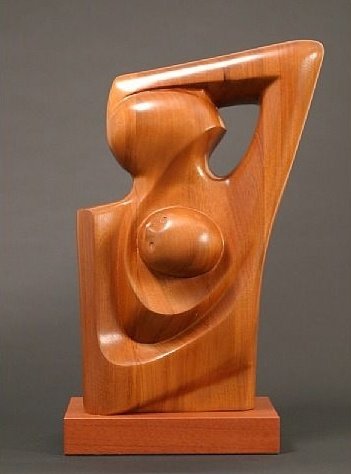Visualizing Mothering through the work of Elizabeth Catlett

Mother and Child #2, wood carving
Copyright 1971, Elizabeth Catlett, All Rights reserved.
African American artist Elizabeth Catlett (1915-2012), who created iconic twentieth-century sculptures focused on both the Black-American experience and the experiences of women, devoted significant attention to the act of mothering.
Influenced by Mexican and African traditions, Catlett sculpted work centered on the experiences of Black mothers and children. The artist received many awards throughout her lifetime and was also an activist who advocated for working class mothers of color.
In Catlett’s Mother and Child #2 (above), the smooth wooden carving represents a mother encircling her baby with one arm. The child’s head emerges from the mother’s breast, inseparably connected to her body. The image reminds the viewer of the interconnectedness of mother and child and how two bodies become one when mothering a child.
In his writing on a 2011 retrospective of Catlett’s work at the Chrysler Museum of Art, the museum’s chief curator Jeff Harrison wrote:
With simple, clear shapes she evokes both the physical and spiritual essence of her subjects. Her hardy laborers and nurturing mothers radiate both power and a timeless dignity and calm. Whether working in wood, stone, bronze, or clay, Catlett reveals an extraordinary technical virtuosity, a natural ability to meld her curving female forms with the grain, whorls, color, or luster of her chosen medium.
Catlett’s sculptures of mothers are calming to look at, and pregnant women can look to them during pregnancy or mothering to visualize the interconnectedness they have with their unborn or born children.
Images of Elizabeth Catlett’s artwork are widely accessible online. For more information on Catlett’s life and work, see the National Museum of Women in the Arts (NMWA) profile of the artist.